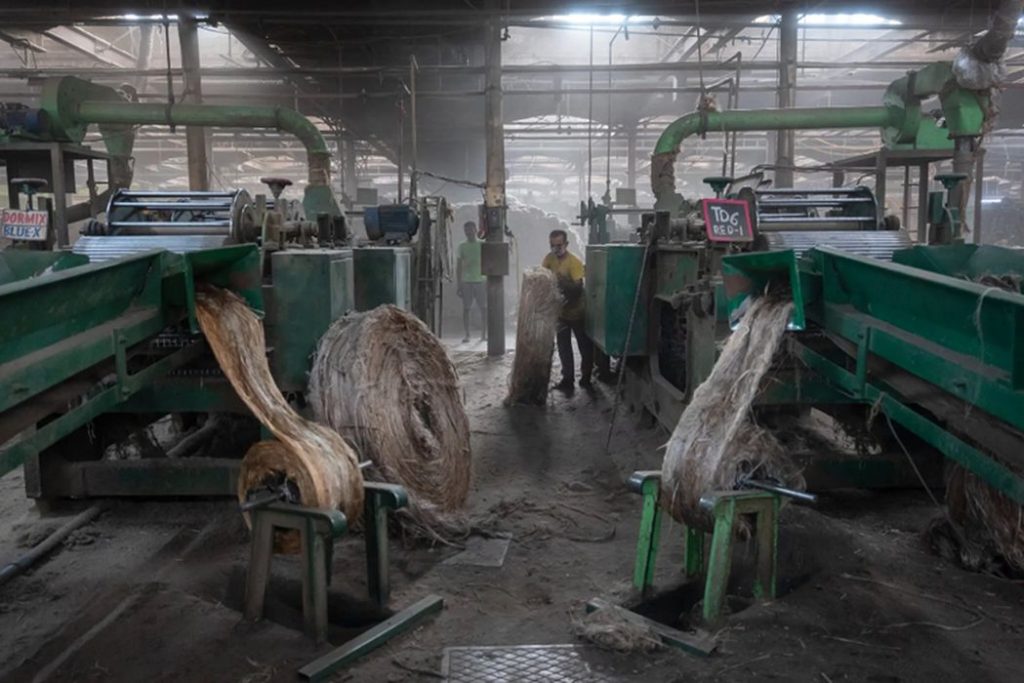
Charles R. Goulding and Preeti Sulibhavi learn that jute is a 3D printable material.
Jute is making a comeback.
Jute is a thick, coarse fiber mostly composed of plant materials like cellulose (plant fiber) and lignin (wood fibers). Most jute comes from the bark of the white Jute plant, or Corchorus capsularis. Jute harvests take place once a year, after a growing season of four months. India is the largest producer and exporter of jute fiber globally, and West Bengal is the state where the plant is plentiful.
In the past, jute has been the go-to fabric for everything from rice bags to pulp and paper in India. Jute has also been used for non-woven textiles, geo-textiles, burlap sacks and packaging for certain household items. While its utility has not been questioned, its texture and convenience have been. With the advent of plastic bags, jute took a back seat. That is until now.

In an October 2022 article featured in the New York Times (NYT), the history and utility of jute were highlighted. With the global trend being to go with items that are eco-friendly and environmentally sustainable, jute just got its second wind.
Jute and 3D Printing
3D printers are capable of printing unique hybrid materials and jute is one of them. There is a niche area for 3D printing natural fibers, such as jute-reinforced composites. One extensive research paper on 3D printing utilizing jute fiber is entitled “Additive Manufacturing of Jute Fiber Reinforced Polymer Composites: A Concise Review of Material Forms & Methods,” by Devarajan, et al. The technique for printing natural fiber-reinforced composites is evolving and different forms of jute fibers are being used by researchers. They include weaved jute, continuous jute fiber, jute as rope as well as jute as a fiber cement matrix.
We have written about how 3D printing is being used by Kvadrat textiles and how companies such as Zara and Levi Strauss are using 3D printing in various aspects of their textile businesses. We have also covered how 3D printers are being integrated into the embroidery process. Jute, being a natural fiber, can also be integrated into 3D printing, but research is still underway as to the optimal techniques to achieve this.
The Research & Development Tax Credit
The now permanent Research and Development (R&D) Tax Credit is available for companies developing new or improved products, processes and/or software.
3D printing can help boost a company’s R&D Tax Credits. Wages for technical employees creating, testing and revising 3D printed prototypes can be included as a percentage of eligible time spent for the R&D Tax Credit. Similarly, when used as a method of improving a process, time spent integrating 3D printing hardware and software counts as an eligible activity. Lastly, when used for modeling and preproduction, the costs of filaments consumed during the development process may also be recovered.
Whether it is used for creating and testing prototypes or for final production, 3D printing is a great indicator that R&D Credit eligible activities are taking place. Companies implementing this technology at any point should consider taking advantage of R&D Tax Credits.
Conclusion
There are numerous ways that the resurgence of jute is relevant to the 3D printing industry. Reducing our carbon footprint and living sustainably are what draw people to use those reusable Trader Joe’s bags, which are made of jute. This is an area where there is room for further 3D printing research and innovation.

